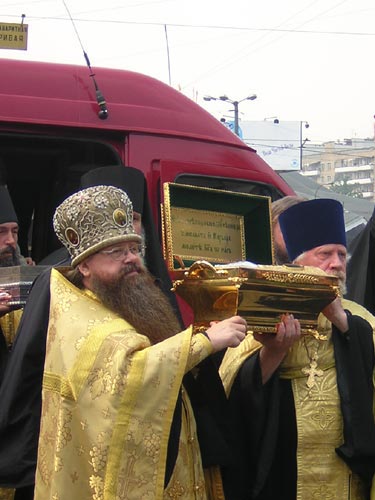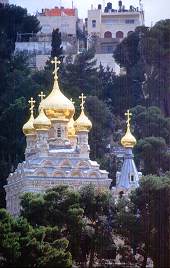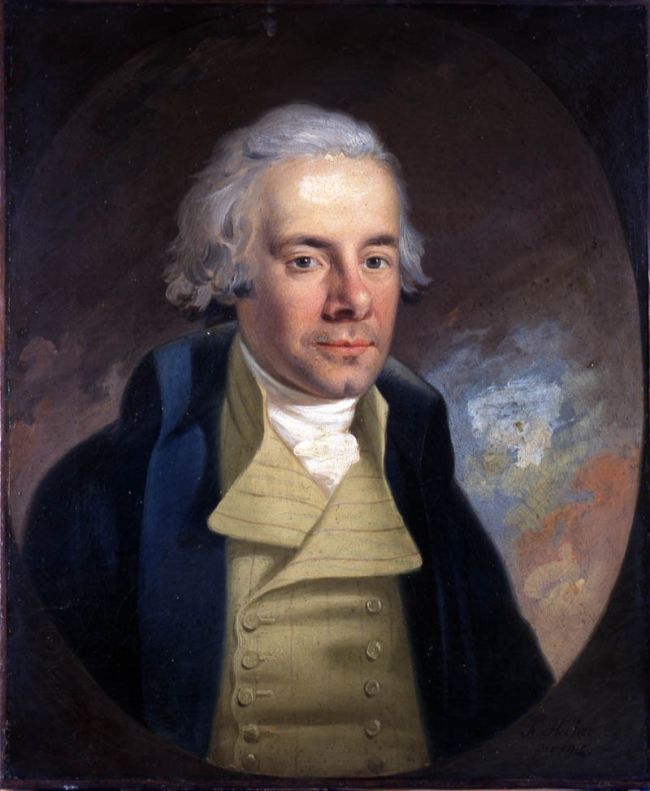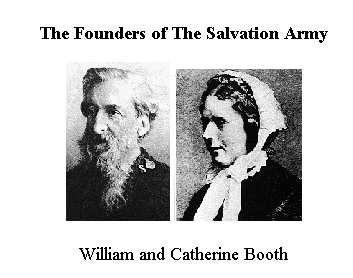Lifting his arms to heaven, Metropolitan Vladimir prayed aloud:
"O Lord, forgive my sins, voluntary and involuntary, and accept my spirit in peace."
Then he blessed the murderers with both hands and said:
"My God bless and forgive you."
In the silent night four shots were heard, then two more, then more...
The Hieromartyr Vladimir of Kiev, February 7th, 1918 n.s.
On this coming Sunday, the Russian Orthodox Church celebrates the memory of the New Martyrs and Confessors of Russia, who were slain by the Communists. The reason why this particular Sunday was chosen, was because this is the nearest Sunday to the day upon which the first Martyr of the Communist Yoke was slain (January 25th on the Old Calendar, February 7th on the civil calendar).
It is perhaps not a coincidence that this martyr was Metropolitan Vladimir of Kiev, who bore the name of St. Vladimir the Great, who enlightened the Russian land with the Christian faith; and who was the Metropolitan of Kiev, the mother city of Russia which saw
the baptism of Rus' in 988 a.d. This was the begining of a new baptism of Rus', and through the faith and prayers of the New Martyrs we are now begining to see a rebirth of Orthodox Christianity in Russia.
It is especially moving to read about the reaction of the faithful, who all their lives had read about the martyrs of the past, but who for the first time saw one in the flesh.
This would be only the first of millions slain by the Communists for refusing to bow the knee to the state, rather than to God.
Here is
the account of his murder at the hands of the Communists:
Artillery shells began to fall on the Kiev Caves Lavra on January 15 and continued for several days. However, the metropolitan continued with his religious duties, displaying great calm, and on January 23 celebrated his last Divine Liturgy with the brotherhood of the Lavra. On the evening of January 23 the Bolsheviks broke into the Lavra, committing unparalleled acts of sacrilege and looting, mocking and whipping the monks and killing the officers and other military personnel who were there. In spite of all the commotion, the metropolitan served an akathist to the Dormition of the Mother of God in the great church of the Lavra, which proved to be his last service on earth. Then he and Bishop Theodore of Priluki moved to the altar of the lower church, which was dedicated to St. Michael, first metropolitan of Kiev.
The night of January 25 was full of alarm. Four armed men and a woman, dressed as a Red Cross nurse, broke into the quarters of the superior, made a thorough search and took everything of value. In the middle of the night, three of them went out "for reconnaissance" and robbed the treasurer and the provost. Later, three armed Reds searched the metropolitan's rooms and, being unable to find any valuables, carried away a golden medal from the safe.
At half past six in the evening, the doorbell rang loudly three times. Five men, dressed in soldiers' uniforms and led by a sailor, entered the house and asked for "Vladimir, the Metropolitan". They were directed downstairs to the cell of the archpastor. The metropolitan came out to meet them, and was taken into the bedroom where they remained for twenty minutes behind locked doors. There Metropolitan Vladimir was tortured and choked with the chain of his cross, insulted and ordered to give them money. Later, the attendants found on the floor of the room pieces of a broken chain, a silk cord, a tiny case with holy relics and a small icon which the metropolitan always wore around his neck.
When the metropolitan came out twenty minutes later, surrounded by his torturers, he was wearing his cassock, a panagia and a white klobuk on his head. On the front steps he was approached by his old cell-attendant, Philip, who asked for a blessing. The sailor pushed him aside, shouting:
"Stop showing respect to these bloodsuckers. Enough of that!"
The metropolitan went up to Philip, blessed and kissed him, and, shaking his hand, said:
"Goodbye, Philip."
Then he wiped away his tears. Philip later reported that when they parted the metropolitan was calm and solemn, as if leaving for church to celebrate the Holy Liturgy.
This old, humble and innocent servant of God went to his death without any sign of weakness or fear. As he was led out of the monastery he crossed himself and softly chanted a prayer.
An eyewitness relates that Metropolitan Vladimir was driven from the gates of the monastery to the place of execution. On his way from the car to a small clearing by the fortified wall, he asked:
"Is it here that you want to shoot me?"
One of the murderers answered:
"Why not? Do you expect us to stand on ceremony with you?"
When the metropolitan asked for permission to pray before he was shot, the reply was:
"Be quick about it!"
Lifting his arms to heaven, Metropolitan Vladimir prayed aloud:
"O Lord, forgive my sins, voluntary and involuntary, and accept my spirit in peace."
Then he blessed the murderers with both hands and said:
"My God bless and forgive you."
In the silent night four shots were heard, then two more, then more...
"They are shooting the metropolitan," said one of the monks at the Lavra.
"There are too many shots for one murder," replied another.
At the sound of the shots, some fifteen sailors with revolvers and lanterns ran into the yard of the monastery. One of them asked:
"Did they take the metropolitan away?"
"They led him out of the gates," replied the monks timidly.
The sailors ran out, and in about twenty minutes returned.
"Yes, we have found him," they said, "and we'll take every one of you out in the same way."
There is another account of the metropolitan's death. Archimandrite Nicanor Troitsky recalls that when he was a boy his mother hurried with him to the Lavra, where a ring of soldiers were holding a crowd back from the scene of the execution. He recalls that the metropolitan was given a series of questions, and each time he gave an (unsatisfactory) answer a bayonet was thrust into his body until he became a fountain of blood. After the execution the crowd burst through the cordon of soldiers. Then Fr. Nicanor's mother told him to put his fingers into the blood of the martyred metropolitan, make the sign of the cross with them on his forehead, and remember that he had witnessed the death of a true martyr, to whose confession he must remain faithful for the rest of his life...
The silence was not broken again that night. The monastery slept, and no one seemed to realize that only a thousand feet from the northern gates of the Lavra, in a pool of blood, lay the shattered body of the holy metropolitan.
At sunrise, some women pilgrims appeared at the Lavra gates, and the monks learned from them where the mutilated body of the metropolitan was to be found. The brotherhood decided to bring the body into the monastery, for which permission from the communist authorities was obtained. At nine o'clock, Archimandrite Anthimus, accompanied by four medical orderlies, went to the scene of the murder.
The metropolitan was lying on his back covered with an overcoat. Missing were his panagia, his klobuk and cross, galoshes, boots, socks, gold watch and chain. The autopsy showed that he had been shot with exploding bullets and stabbed in several places with cold, sharp weapons. His hands were frozen in the position of blessing.
After serving a litiya at the spot where the metropolitan had died, they laid the body on the stretcher and, at about eleven o'clock in the morning, they brought it into the church of St. Michael, where the murdered metropolitan had spent the last few hours of his life. As Archimandrite Anthimus was lifting the body, he was surrounded by about ten armed men who started to mock and insult the remains.
"You want to bury him! But he deserves to be thrown into the ditch! You intend to make holy relics of him, that's why you are picking him up!" they shouted.
As the mournful procession was making its way to the Lavra, pious women who were passing by wept and prayed, saying:
"The sufferer and holy martyr, may God's Kingdom be his!"
"A heavenly kingdom! His place is in hell, at the very bottom of it," replied the fanatics.
After the metropolitan's body had been photographed and dressed in the proper vestments, the deputy abbot of the Lavra, Archimandrite Clement, and the senior brethren of the monastery served a panikhida. On January 27, Metropolitan Platon of Tbilisi, who was representing the Russian Patriarchate at the Ukrainian Council, served a panikhida for the metropolitan in Kiev. On January 29, the body was transferred to the Great Church of the Kiev Caves Lavra, and after the burial service it was buried in the church of the Elevation of the Cross in the Near Caves.
On February 15/28, 1918, a session of the Russian Church Council meeting in Moscow was dedicated to the memory of the murdered metropolitan.
Metropolitan Vladimir was the hierarch who bore the brunt of the first revolutionary assault on the Russian Church. It was therefore fitting that he should become her first hierarchical new martyr. And on April 5/18 the Russian Council decreed that the Sunday nearest the date of his martyrdom, January 25 / February 7, should become the date of the annual commemoration of all the holy new martyrs and confessors of Russia.






































